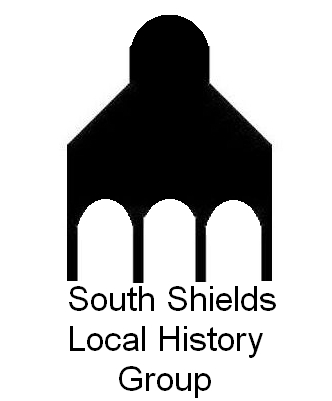In 1920 Miss Gladys Winch Bailey a young dancer, married Milton S. Henry. The following year their son, Bert Llewellyn Henry was born followed five years later by a daughter Gladys and then Stanley born in 1929 in South Shields.
Prior to the outbreak of the Second World War Gladys and the family were living with her parents Bertie and Eliza. Her 59 year old father, who was originally from Norfolk, was a Dock Gateman and they were living in a house on Wellington Terrace, South Shields. Dancer Gladys was by then the Principal of a thriving dancing establishment which was known by the grand title of ‘Madame Bailey’s Premier School of Dancing’.
Her son Bert was not living at home because he had joined the RAF and was serving with Bomber Command in 10 Squadron as a Wireless Operator/ Air Gunner operating in Armstrong-Whitworth Whitley Bombers. 10 Squadron’s airfield was at Dishforth, 5 miles east of Ripon, up until July 1940 when it moved to Leeming, Northallerton.
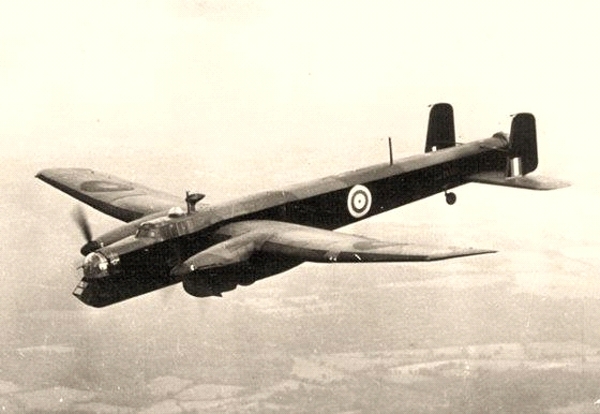
Almost a month after war was declared at 10pm on the 1st October 1939 Bert’s squadron took off, flying at 5 minute intervals which were led by former WW1 flying ace Wing Commander Staton on their way to make a leaflet raid, (also known as a ‘nickel’ raid) on Berlin and it was carried out in very severe weather conditions.
The squadron were actually the first to visit the city in wartime. As Staton’s Whitley arrived over Berlin, the bombers oxygen supply failed with a dramatic consequence – the two wireless operators collapsed and the mechanism of the rear turret froze trapping the gunner. The navigator had to drag the collapsed crew members and gave them oxygen via the cockpit’s supply. The WW1 battle tested Wing Commander, acting with great coolness in a stressful situation, threw the plane into a dive to 9000 feet to de-ice the plane and regain the oxygen supply. The navigator was recommended the DFC for his courageous actions that night. (A few months later Wing Commander Staton was awarded a DSO and Bar for operations over Bremen in May 1940. This remarkable airman of two world wars also appeared in the 1941 propaganda film Target For Tonight as the Station Commander. In 1942, after being transferred to the Far East he was captured by the Japanese in Java. Like so many Allied servicemen, he suffered badly at the hands of the Japanese – the POWS suffered torture both physical and mental whilst being almost starved to death. )
The leaflets that 10 squadron had dropped conveyed the following message to Germany:
“German Men and Women: The Government of the Reich has, with cold deliberation, forced war upon Great Britain. They have done so knowing that it must involve mankind in a calamity worse than that of 1914. The assurances of peaceful intentions the Fuhrer gave to you and to the world in April have proved worthless as his word at the Sportpalast last September, said: “We have no more territorial claims to make in Europe”. Never has government ordered subjects to their death with less excuse. Germany was in no way threatened or deprived of justice”…. It went on to stress “President Roosevelt offered you both peace with honour and the prospect of prosperity. Instead your rulers have condemned you to massacre, miseries and privation of a war they cannot hope to win. It is not us but you they have deceived. For years their iron censorship has kept you from the truth. It has imprisoned your minds in, as it were a concentration camp… We have no enmity against you the German people. This censorship has also concealed from you that you have not the means to sustain protracted warfare…We are too strong to break by blows and we could wear you down inexorably. You the German people, can, if you will, insist on peace at any time.”
However the Nazis propaganda machine reacted in a predictable manner and claimed that the inhabitants of Berlin had slept very well and saw nothing of the RAF planes and that it must have been a dream of the British. In reaction to this German sarcasm the Sunderland Echo observed that the Berliners had now realised the strike potential of the RAF. Hitler himself had been present as he had been having talks with Ribbentrop and Count Ciano (Mussolini’s son-in-law). The Daily Mirror stated that the Germans were increasing their efforts to intercept the Allied reconnaissance planes which had been flying over German territory on a large scale, which indicated that they were very far from nonchalant about British air power and considered it a serious threat. That day the Germans also sent out a thinly veiled warning to the United States about ‘suspicious behaviour’ by US ships in waters round France and Britain.
The King visited RAF Dishforth at the beginning of November which must have given a great boost to the morale for Bert and his comrades. His Royal Highness inspected the bombers and their crews.
On the 4th January 1940 at 3pm, Bert’s Whitley bomber K9020 was one of two of the squadron’s crews ordered on a leaflet drop, this time over Bremen. The RAFs fleet of Whitley bombers with a range of 1250 miles were selected as principal weapon in aerial propaganda. During this operation Bert Henry was flying as Air Gunner. On the home run Pilot Officer Victor R. Paterson and Pilot Sgt Walter S Hillary discovered that their brake pressure was low and coming in to land at midnight in the dark they didn’t see a line of trees and the aircraft unfortunately clipped one, which resulted in the starboard undercarriage collapsing as they made a hard landing. Fortunately the crew, including Observer Sgt Henry J Davis and Wireless Operator William R Armstrong and Bert escaped shaken and a bit bruised, but uninjured and no doubt recounted the tale of their lucky escape in the local pub, whilst trying to hide the feeling of fear they had understandably experienced crashing to the ground out of control.
The squadron’s first bombing mission of the war was on the evening of 19/20th March 1940 when 8 Whitley aircraft each carrying 1500 pounds of bombs, attacked the German minelaying seaplane base at Hornum, on the island of Sylt situated in the Frisian Isles of the North Sea.
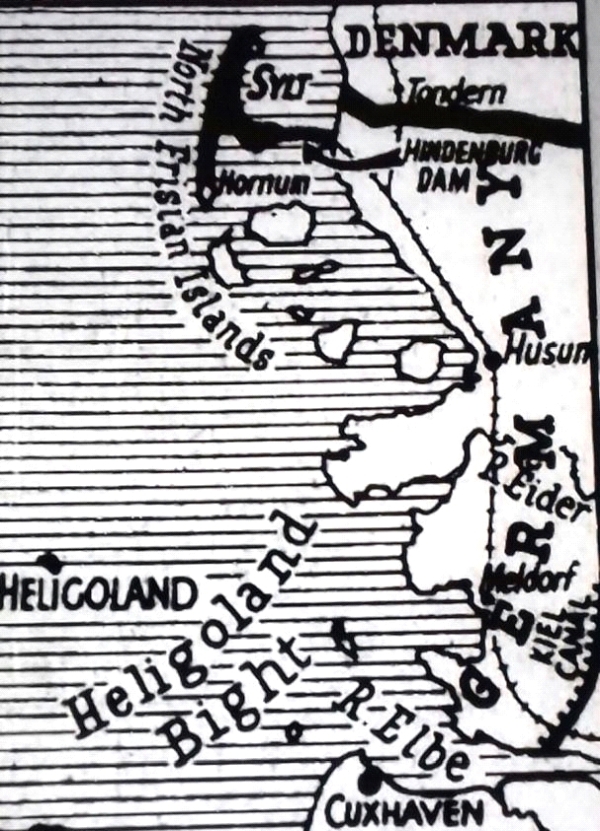
The Yorkshire Post reported that the RAF reprisal lasted 6 hours and it was described as the biggest air raid of the war.
“Shortly before eight o’clock last night our planes attacked the German air base at Hornum, on the island of Sylt. Eye witnesses on the Danish island of Romoe saw the whole landscape lit up by explosions. A message from Copenhagen stated that more planes arrived at 12-45am and bombed Sylt. One of these bombers later fell in flames on a beach. Then the Germans opened up their defences in earnest.”
The British Air Ministry announced that severe damage was done to the Hornum Base and that the raid was in reprisal for the attack on the Orkneys at Scapa Flow on Saturday, which had resulted in damage to one warship, the death of a civilian, and several naval and civilian casualties. The Germans had sent 14 bombers and the raid had lasted about 85 minutes.
The Yorkshire Post stated “Mr Chamberlain was loudly cheered in the Commons last night when he announced that the raid was taking place. Radio messages were put out to the British public even before the raid had ended – an event without precedent in the history of warfare.”
The headline of The Shields Evening News on Wednesday the 20th was NAZI SEAPLANE BASE HAVOC –Scapa Flow Raid Avenged. Gladys and her parents would have had no idea if young Bert was involved that day, but they must have been very worried for the safety of the 19 year old imagining him in such a daring operation.
On the 10th June 1940 Italy joined Germany and declared war on Britain and the next night Bert’s squadron flew from Guernsey airport through a blinding thunderstorm and severe icing to attack the Fiat Works at Turin. The weather was so severe that one aircraft was struck by lightning which electrocuted the rear gunner leaning on the guns and burnt the wireless operator. The pilot had no choice but to abandon the mission to get his crew medical help back in Britain.
The Daily Mirror described the bombers as battling through snow storms to cross the Alps and then swooping down from the clouds to bomb two of Italy’s largest aircraft and aero-engine factories. The airmen had to use oxygen as they flew over the mountains whilst freezing temperatures made ice form on the wings and fuselages.
It took the Italians completely by surprise and at midnight Turin was subjected to repeated attacks for 3 hours. The Fiat Works, one of Italy’s greatest production centres for fighter aircraft and engines was clearly identified in the light of parachute flares. As the Whitley’s dropped the bombs there was a vast explosion and an uprush of bright sparks like a fireworks display. The blaze of light was so dazzling that the bomber crews flying 5000ft above were blinded for several minutes.
Then on 29/30th June 1940 with Bert acting as Wireless Operator and Pilot Officer Henry G Cattell DFC at the controls flew with the rest of their crew on a sortie to heavily defended Frankfurt. They came under intense and sustained fire from enemy flak and the aircraft was badly damaged. Fortunately they were able to return back to base safely and the plane could be repaired on this occasion. Yet another lucky escape for Bert Henry of South Shields.
Once again the 19 year old was the Wireless Operator on a raid to Gelsenkirchen on the night of 11/12th August 1940. The bomber left the runway at RAF Leeming at 8.30pm with Flight Lt Gordon Raphael DFC MiD at the controls. Their mission was to drop ‘razzles’ on the Black Forest, where it was believed arms and military equipment was concealed. A razzle was a type of incendiary which were carried in containers of water in the aircraft. When released down the flare chute they could unfortunately get lodged and when dried out they ignited, making them a particularly hazardous weapon.
Bert’s bomber was once more hit by anti-aircraft flak over the drop zone but experienced Pilot Raphael got them back to base and landed safely without incidence. Unfortunately young Bert was to fly his last mission in this aircraft – Whitley Bomber P4993.
On the 14th October 1940 the aircraft was flying back from Le Havre when it struck a barrage balloon cable near Weybridge and crashed, tragically killing all on board.
The Shields Gazette had the headline Tynesider Killed on 41st Raid : A 19 year old South Shields Airman has been killed whilst taking part in his 41st bombing raid on enemy territory. He is Sergeant Bert Llewellyn Henry, son of Mrs G Henry and grandson of Mr & Mrs B Bailey of Wellington Terrace. Official news of his death was received by his Mother last Wednesday. His Mother better known as Madam Bailey principal of the Premier School of Dance had a letter from him on Saturday saying he was coming home on leave next Tuesday. Mrs Henry states that her son had taken part in some of the biggest bombing raids on Germany and Italy. Previously he had taken part in leaflet raids on Germany. On three occasions he served in bombers when the pilot officer gained a DFC.
Bert is buried in military grave No. 1194 in Section O of Harton Cemetery, South Shields.
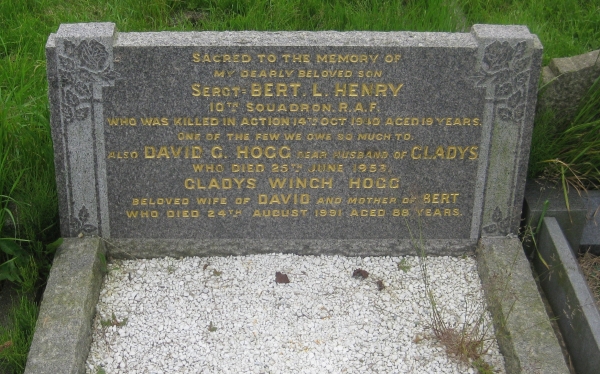
His brother Stan was only 11 years old when the tragedy struck. He became a draughtsman at Reyrolles in Hebburn. In 1956 his mother Gladys had opened The Cellar Jazz Club at 45 Beach Road in what had once been the premises of her dancing school. It resembled a family home more than a Club. A few years later, encouraged by the boom of 60s music scene, Gladys and Stan along with his friend John W Smith who also worked at Reyrolles, decided to plunge into the nightclub business and set about looking for suitable premises in all the largest cities. Their first major success came when they moved right into the centre of Newcastle with the take-over of the Cavendish Club. Their second came with La Dolce Vita. They eventually built their own nightclubs designed to their own specifications.
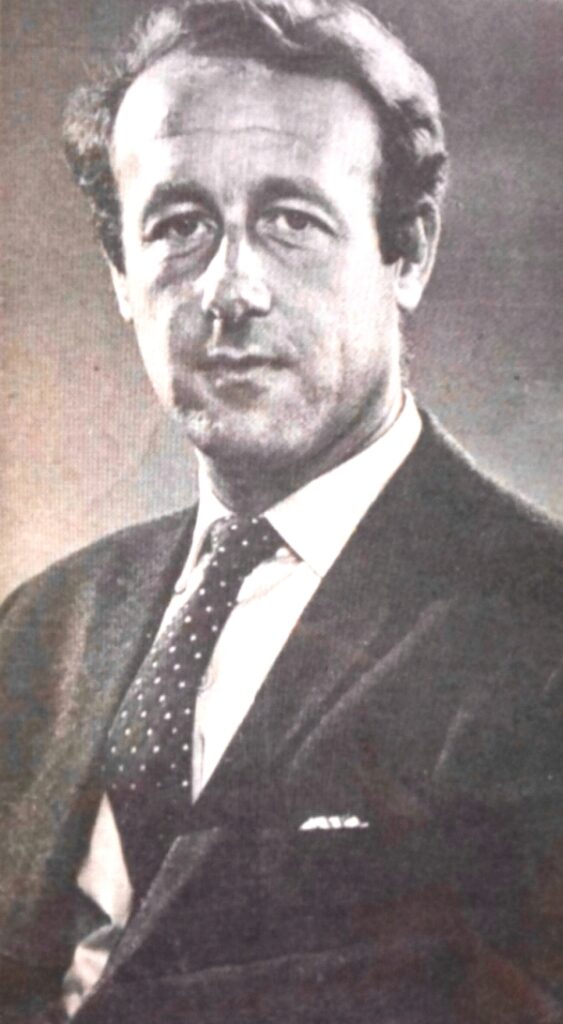
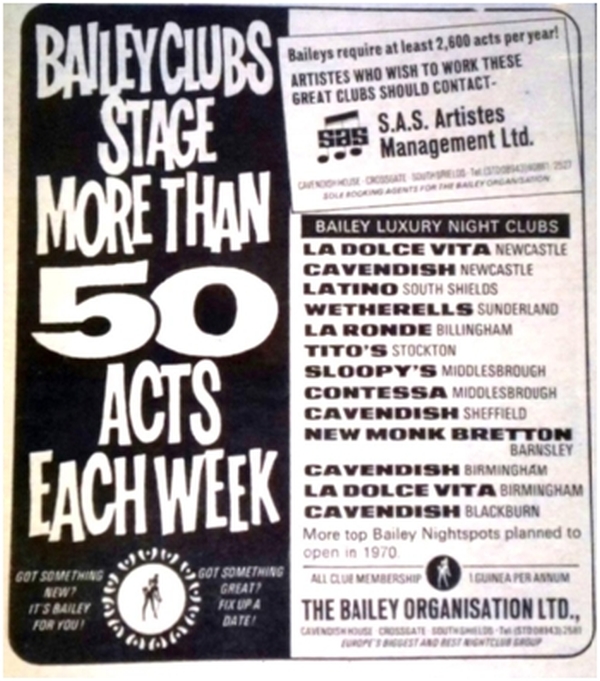
In 1969 The Stage described Stan and John as running a tight ship and that Bailey’s operated from its HQ in South Shields, the biggest chain of nightclubs in Europe. A decade before the men were electrical engineers earning about £1500 a year. The Financial Times published a half page article on the vital role that Stan and John played in increasing the importance of their native North East. On February 1st 1967 they had Jimi Hendrix performing at the New Cellar Club in South Shields. A milestone in British pop history! Who knows what Stan’s brave brother Bert might have gone on to achieve had he survived the war. Britain lost its finest men defending this island.
Written and researched by Dorothy Ramser
